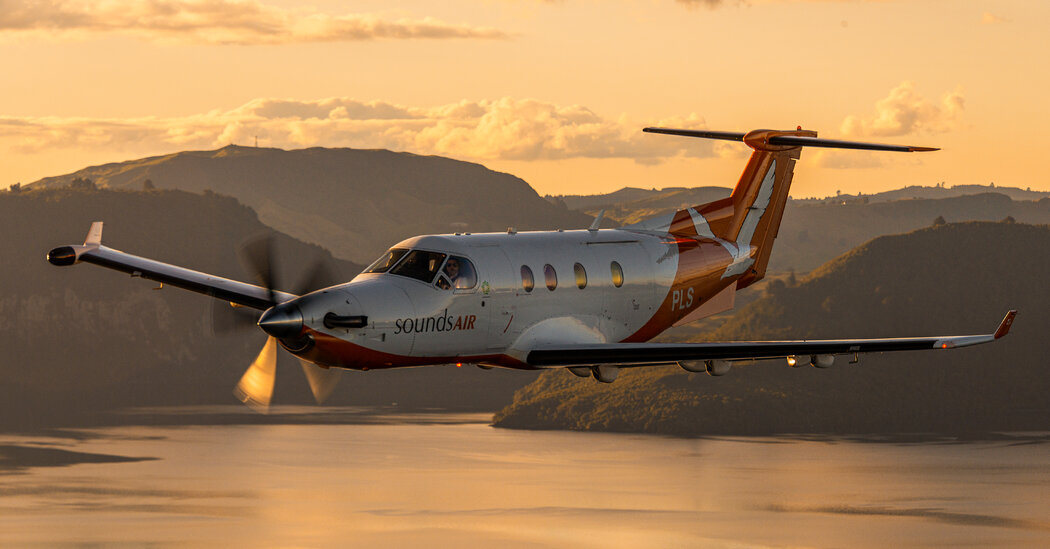The Australia Letter is a weekly newsletter from our Australia bureau. Sign up to get it by email. This week’s issue is written by Natasha Frost, a reporter based in Melbourne.
The other week, approximately 32 years into my career as a seasoned flier, I experienced air travel as if for the very first time — the flight of angels, of billionaires, of dreams. (It was still in coach class.)
On a recent reporting trip in New Zealand, I arranged to spend the weekend visiting an old friend who now lives near Havelock, a town of around 600 people at the top of the country’s South Island, about 50 miles due west of Wellington, where I was traveling from.
With the Cook Strait between New Zealand’s North and South Islands in the way, the easiest option was to take a domestic flight — one of hundreds that zip across the country every day.
Flying domestically in New Zealand is only marginally more rigorous than boarding a bus. If you don’t have baggage to check in, you may walk through the airport doors half an hour before your flight departs. No one will check your ID at any point, and you don’t even need to show your boarding pass to pass through security, which usually takes a minute or two, with no limits on liquids. In some smaller airports, there is no security at all.
To get to Havelock, I booked a seat on a flight run not by Air New Zealand, the national airline, but by Sounds Air, one of the country’s far smaller “regional carriers,” of which there are around half a dozen.
Departing Sounds Air from Wellington, you bypass security screenings altogether. Your ticket to ride is little more than a reusable piece of green laminated paper that reads “Boarding Pass to Blenheim.” Checking in a bag? They sling it into the back of the nine-seat plane. And don’t bother going to the carousel on arrival. It’ll be handed to you as you get off.
The lack of rigmarole is entirely intentional, with some frequent fliers purchasing 10-trip tickets for regular hops across the strait, said Andrew Crawford, the airline’s chief executive.
“That is our point of difference,” he said. “This is what people like.”
The airline was founded in 1986, with a single nine-seater Cessna Caravan ferrying people to the Marlborough Sounds. It now has 10 planes — the largest of their crafts seats 12 — and carries about 120,000 people a year, mostly on routes where there is no alternative, other than the road.
Some passengers are commuters. Others are tourists. And…
Click Here to Read the Full Original Article at NYT > Travel…
